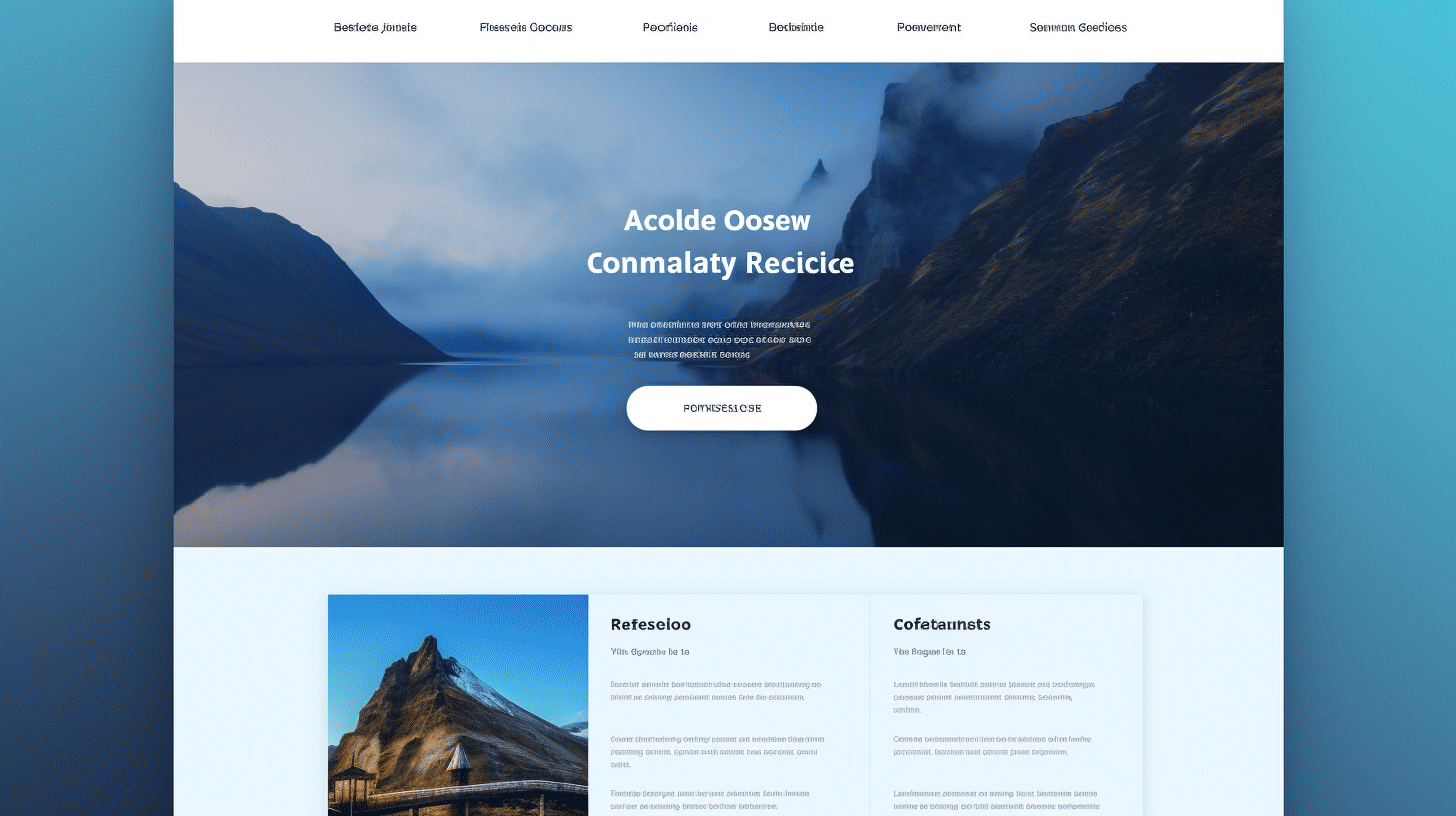在当今的数字环境中,拥有强大的在线形象对于企业和个人都至关重要。实现此目标的方法之一是针对搜索引擎优化您的网站。搜索引擎优化 (SEO) 是提高网站在搜索引擎结果页面 (SERP) 中的可见性和排名的做法。
WordPress 长期以来一直是网站开发的热门选择,这要归功于其用户友好的界面和广泛的插件和主题。然而,最近,WordPress 开发领域出现了一种新趋势——无头 WordPress。
Headless WordPress 是一种现代方法,它将 WordPress 网站的前端和后端分离。它允许开发人员将 WordPress 用作内容管理系统 (CMS),同时利用其他技术来构建高度交互和动态的前端体验。这种架构方法提供了许多好处,但在 SEO 方面也带来了独特的挑战。
对于任何希望利用无头 WordPress 的强大功能同时保持强大的在线影响力的人来说,理解并有效应对这些挑战至关重要。在本文中,我们将探索无头 WordPress 的世界,并提供提高无头 WordPress 网站搜索排名的策略。所以,喝杯咖啡,让我们开始吧!☕️
了解 Headless WordPress
在内容管理系统 (CMS) 领域,WordPress 长期以来一直是构建网站和博客的热门选择。然而,随着无头架构的兴起,一种使用 WordPress 的新方式应运而生,为开发人员和内容创建者提供了令人兴奋的可能性。🌟
定义
那么,无头 WordPress 到底是什么?简而言之,它将网站的后端(“无头”部分)与前端(“头”)分离。传统上,WordPress 是一个一体化解决方案,处理网站的内容管理和展示方面。但使用无头 WordPress,内容管理系统仅用于管理和组织内容,而前端由单独的技术堆栈处理。
架构概述
为了更好地理解无头 WordPress 的工作原理,让我们仔细看看它的架构。🏰
- 后端:WordPress CMS 🖥️
- API:沟通桥梁 🌉
- 前端:独立的技术栈 💻
无头 WordPress 的核心是熟悉的 WordPress CMS。内容创建者可以使用熟悉的用户界面创建、编辑和组织其内容。然后,这些内容将存储在数据库中。
API,即应用程序编程接口,是后端和前端之间的沟通桥梁。它允许开发人员从 WordPress 数据库获取内容并将其提供给前端。
与传统的 WordPress 设置(其中前端与 CMS 紧密耦合)不同,无头 WordPress 允许灵活地选择前端技术堆栈。这意味着开发人员可以使用 React、Angular 或 Vue.js 等现代框架来构建用户界面并处理内容的呈现。
通过将后端与前端分离,无头 WordPress 开辟了一个全新的可能性世界。开发人员可以构建不受 WordPress 主题系统约束的动态交互式用户界面。内容创建者可以专注于创建和管理内容,而开发人员可以打造独特且引人入胜的用户体验。💡
为什么要使用 Headless WordPress?
现在我们已经对无头 WordPress 是什么以及它如何工作有了基本的了解,您可能想知道为什么有人会选择无头 WordPress。嗯,有几个令人信服的理由:
- 灵活性:使用 Headless WordPress,您可以自由选择最适合您项目的前端技术堆栈。这为设计和开发独特的用户体验提供了更大的灵活性。
- 表现:通过将前端与后端分离,无头 WordPress 可以提供更快的页面加载时间和更高的性能。这对于流量大或功能复杂的网站尤其重要。
- 可扩展性:无头架构使您的网站能够无缝扩展。随着流量的增长,您可以轻松添加更多服务器来处理负载,而不会影响前端的性能。
- 面向未来:通过采用无头 WordPress,您可以利用前端开发领域的最新技术和趋势,让您的网站适应未来发展。您不受 WordPress 主题限制的束缚,可以适应不断变化的用户期望。
因此,如果您希望将 WordPress 网站提升到一个新的水平,无头 WordPress 可能就是您一直在寻找的解决方案。探索各种可能性并释放您的创造力!🚀
要详细了解为何应使用无头 WordPress,请查看我们的 综合指南.
SEO和无头WordPress
在当今的数字世界中,强大的在线形象对于任何企业的成功都至关重要。当谈到优化您的网站以在搜索引擎结果中排名更高时,搜索引擎优化 (SEO) 起着重要作用。但是 Headless WordPress 网站呢?如何有效地管理 Headless WordPress 设置的 SEO?让我们深入探讨 SEO 对于 Headless WordPress 的重要性及其带来的挑战。
SEO 对于 Headless WordPress 的重要性
说到内容管理系统,WordPress 是许多网站所有者的热门选择。其用户友好的界面和丰富的插件生态系统使其成为构建和管理网站的首选平台。但为什么选择 Headless WordPress?
Headless WordPress 设置将前端和后端分离,从而可以更灵活地控制网站的设计和性能。使用传统的 WordPress,前端和后端紧密集成,限制了自定义选项。但是,Headless WordPress 允许开发人员使用 React 或 Angular 等现代技术构建前端,从而打造快速、高性能的网站。
现在,让我们看看为什么 SEO 对你的 Headless WordPress 网站很重要:
- 更好的有机可见性: 优化良好的网站在搜索引擎结果中排名较高,从而提高了知名度和自然流量。
- 改善用户体验: 优化页面加载时间、移动友好设计和轻松导航等 SEO 实践不仅对搜索引擎至关重要,而且有助于增强用户体验。
- 增加在线权限: 当您的网站在搜索结果中排名较高时,它会在您的领域中建立信誉和权威,从而提升您品牌的声誉。
- 目标流量: SEO 使您能够针对特定关键字优化您的网站并瞄准您的理想受众,从而增加转化和销售的机会。
Headless WordPress 的 SEO 管理挑战
虽然 Headless WordPress 提供了灵活性和控制力,但在管理 SEO 方面也带来了一些独特的挑战。以下是您可能会遇到的一些障碍:
- 缺少SEO插件: 传统的 WordPress 网站有各种各样的 SEO 插件可用,例如 WordPress 的 SEO 插件 比如 SEOPress、Yoast 和 Rank Math。然而,由于 Headless WordPress 网站将前端和后端分开,使用这些插件变得更加复杂,甚至可能根本无法使用。
- 技术复杂性: 构建 Headless WordPress 网站需要技术专业知识。设置 API 连接、处理服务器端渲染和优化代码等方面对于 SEO 至关重要。如果没有适当的技术知识,有效实施 SEO 最佳实践可能会很困难。
- 内容优化: 在 Headless WordPress 设置中,内容通常与前端分开存储和管理。这种分离可能使优化内容以进行 SEO 变得困难,因为您需要确保不同平台上的元数据、关键字和其他页面因素的一致性。
尽管存在这些挑战,但只要采用正确的方法和专业知识,管理 Headless WordPress 网站的 SEO 是完全可以实现的。通过了解独特的要求并实施 SEO 最佳实践,您可以确保您的 Headless WordPress 网站吸引自然流量、增强用户体验并推动业务增长。
请记住,SEO 是一个持续的过程,需要持续监控和优化。及时了解最新的 SEO 趋势,定期进行审核,并相应地调整您的策略,以保持领先于竞争对手。
提高搜索排名的策略
在当今的数字环境中,拥有强大的在线形象对于各种规模的企业都至关重要。成功实现在线形象的关键因素之一是搜索引擎可见性。当您的网站在搜索引擎结果中排名较高时,它会增加您吸引自然流量和潜在客户的机会。那么,您如何提高搜索排名并提高在线可见性呢?
以下六种策略可帮助您优化网站并提升搜索引擎排名:
站点地图和索引
🗺️ 网站地图涉及为您的网站创建搜索引擎可以轻松理解的导航结构。它可以帮助搜索引擎机器人有效地抓取和索引您的网页。考虑使用网站地图为搜索引擎提供您网站层次结构的清晰路线图,并让它们更容易发现和索引您的内容。
关键词优化
🔍 关键词优化是进行彻底研究以确定目标受众在网上搜索时使用的关键词的过程。将这些目标关键词纳入网站的内容、标题、元描述和 URL 中,可以让您的网站有更好的机会在相关搜索结果中排名更高。
元数据管理
💡 元数据是指搜索引擎用来了解网页内容的信息。通过使用相关关键字和引人注目的消息优化元标题和元描述,您可以增加吸引搜索引擎用户点击的可能性。不要忘记让您的元描述具有吸引力,因为它们可以作为搜索结果中网页的“迷你广告”。
链接策略
🔗 建立强大而多样化的链接策略对于提高您的搜索排名至关重要。寻找机会从信誉良好且权威的网站获取反向链接,因为搜索引擎将这些链接视为您网站可信度和相关性的指标。此外,您自己网站内的内部链接可以帮助搜索引擎了解您内容的结构和层次结构。
加载速度提升
⏱️ 加载速度对用户体验和搜索引擎排名至关重要。加载缓慢的网站会阻碍用户,导致跳出率上升,并可能影响您的搜索排名。通过压缩图像、最小化 HTTP 请求和利用浏览器缓存技术来优化网站的加载速度。
移动优化
📱 移动优化不再是可选项,而是必需品。随着越来越多的用户通过移动设备访问互联网,搜索引擎会优先考虑提供无缝移动体验的网站。确保您的网站响应迅速且适合移动设备,让用户能够通过任何设备轻松访问和浏览您的网站。
请记住,提高搜索排名是一个持续的过程,需要结合技术优化和以用户为中心的策略。通过实施这些策略,您可以提高网站的知名度,吸引更多自然流量,并最终提升您的在线影响力。
在 Headless WordPress 上实施 SEO 策略
在当今的数字环境中,拥有强大的在线影响力对于任何企业或网站的成功都至关重要。推动自然流量和提高搜索引擎结果可见度的一种有效方法是实施 SEO 策略。在内容管理和网站开发方面,WordPress 是许多人的热门选择。随着无头 WordPress 的兴起,一种将前端和后端分开的解耦方法,实施 SEO 策略变得更加重要。在本文中,我们将探讨可以在无头 WordPress 网站上实施 SEO 策略的三个关键领域。
图形用户界面 (GUI) 调整
设计精良且用户友好的网站不仅可以增强用户体验,而且在 SEO 中也发挥着重要作用。以下是您可以在无头 WordPress 网站上进行的一些 GUI 调整,以针对搜索引擎进行优化:
- SEO友好的URL:确保您的 URL 简洁、描述性强且包含相关关键字。这有助于搜索引擎了解您网页的内容。
- 页面标题和元描述:为您网站上的每个页面制作独特且引人注目的页面标题和元描述。这些元素会出现在搜索引擎结果中,应准确概括内容,同时吸引用户点击。
- 标题标签:使用适当的标题标签(H1、H2、H3 等)来构建您的内容。这有助于搜索引擎了解您网页上信息的层次结构和重要性。
- 图像优化:使用描述性文件名和添加替代文本来优化您的图片。这可以提高可访问性并帮助搜索引擎了解图片的内容。
自定义编码技术
在无头 WordPress 网站上实施 SEO 策略时,自定义编码技术可以提供额外的控制和灵活性。以下是一些需要考虑的技术:
- 架构标记:实施架构标记可让您向搜索引擎提供结构化数据,帮助他们更好地理解您的内容。这可以增强搜索引擎列表,例如丰富的摘要。
- 规范 URL:实施规范 URL 可确保搜索引擎在存在多个版本时了解在搜索结果中优先显示哪个版本的页面。这有助于防止重复内容问题并改善整体 SEO。
- XML 站点地图:生成并向搜索引擎提交 XML 站点地图。这有助于搜索引擎更有效地发现和索引您网站的页面。
- 页面速度优化:通过最小化代码、利用缓存技术和优化图像来优化网站的性能。更快的网站可以改善用户体验,并对 SEO 产生积极影响。
API 与 SEO 工具的集成
为了真正发挥无头 WordPress 网站上 SEO 的强大功能,请考虑通过 API 与 SEO 工具集成。这可让您自动执行各种 SEO 任务并获得宝贵的见解。以下是一些 API 集成的示例:
- 关键词研究:与关键字研究工具集成,以确定内容中相关的关键字和短语。
- 排名追踪:连接排名跟踪工具来监控您的网站在特定关键词的搜索引擎排名中的表现。
- 反向链接分析:与反向链接分析工具集成,以监控和分析您网站的反向链接配置文件,使您能够识别链接建设机会并解决任何有害的反向链接。
- 现场审核:使用 API 集成执行定期站点审核,检查技术 SEO 问题、断开的链接以及其他可能影响您站点在搜索结果中的可见性的因素。
通过在无头 WordPress 网站上实施 SEO 策略,您可以提高网站的知名度、吸引自然流量,并最终提高您的在线形象。无论是进行 GUI 调整、利用自定义编码技术还是与 SEO 工具集成,这些策略都可以帮助您在竞争激烈的在线环境中保持领先地位。在您的无头 WordPress 网站上拥抱 SEO 的力量,让您的排名飙升!
监控 SEO 性能
在监控 SEO 性能时,拥有正确的工具和策略至关重要。毕竟,您如何改进无法衡量的东西?在本文中,我们将探讨一些用于跟踪 SEO 性能的顶级工具以及如何有效地分析 SEO 报告。那么,让我们深入研究如何密切关注您的 SEO 工作吧!💪
跟踪 SEO 性能的工具
跟踪 SEO 表现对于了解您的网站在搜索引擎排名中的表现至关重要。幸运的是,有几种强大的工具可以帮助您监控 SEO 工作。以下是一些值得考虑的常用工具:
- 谷歌分析(Google Analytics): Google 的这款免费工具可提供有关您网站性能的宝贵见解,包括自然搜索流量、关键字排名、跳出率等。它是跟踪您的 SEO 工作的绝佳起点。
- Google 搜索控制台: Google 的另一款免费工具 Search Console 可让您监控您的网站在搜索引擎结果中的显示情况。它提供有关抓取错误、索引状态和搜索查询性能的数据,为您提供有价值的信息以改进您的 SEO 策略。
- SEMrush: SEMrush 是一款全面的 SEO 工具,提供关键字研究、竞争对手分析、网站审核等功能。它可以帮助您发现优化网站的机会并跟踪您的进度。
- Moz Pro: Moz Pro 是一款流行的 SEO 软件,可提供数据驱动的见解来提高您的搜索引擎排名。它提供关键字研究、链接分析、网站审核和排名跟踪等功能,使其成为监控 SEO 性能的宝贵工具。
这些工具提供一系列功能和定价计划,因此您可以选择最适合您需求和预算的工具。关键是要有一个工具,让您可以跟踪重要的 SEO 指标,并为您的网站优化做出数据驱动的决策。
分析SEO报告
一旦你设置了正确的工具来监控你的 SEO 性能,知道如何有效地分析报告就至关重要了。以下是一些帮助你理解数据的提示:
- 关注关键指标: 确定与您的 SEO 目标相符的关键绩效指标 (KPI),例如自然流量、关键字排名、转化率或跳出率。密切关注这些指标,以衡量您的 SEO 工作的有效性。
- 寻找趋势: 不要只关注单个数据点,而要寻找随时间变化的趋势。你的排名是在提高还是在下降?你的自然流量是在增长还是停滞不前?了解趋势可以帮助你确定需要改进的领域并跟踪你的进度。
- 与竞争对手比较: 利用可让您分析竞争对手的 SEO 表现的工具。将您网站的排名、流量和关键字与竞争对手进行比较,以获得见解并发现机会。
- 根据洞察采取行动: 分析完报告并确定了需要改进的地方后,就必须采取行动。根据从数据中获得的见解,调整网站的内容、关键字策略或用户体验。
请记住,SEO 是一个持续的过程,定期监控您的表现是保持领先地位的关键。借助正确的工具和分析方法,您将能够做出数据驱动的决策并不断优化您的网站,以提高搜索引擎的可见性。
现在您已经掌握了跟踪和分析 SEO 性能的知识,是时候将其付诸实践了。因此,开始利用这些工具并获得有价值的见解,以提高您网站的搜索引擎排名。祝您监控愉快!📈
结论
总之,提高无头 WordPress 网站的搜索排名对于最大限度地提高在线可见度和吸引更多自然流量至关重要。通过实施有效的 SEO 策略,例如站点映射、关键字优化、元数据管理、链接策略、加载速度改进和移动优化,您可以提高网站在搜索引擎结果中的表现。
然而,由于前端和后端的分离,优化无头 WordPress 网站的 SEO 可能会很困难。它需要调整图形用户界面、自定义编码技术以及通过 API 与 SEO 工具集成。
要监控 SEO 工作的效果,您可以使用跟踪 SEO 效果和分析 SEO 报告的工具。这些见解将帮助您评估策略的有效性并进行必要的调整。
Managed-WP™ 是一款高级托管 WordPress 云托管平台,它提供了简化基础设施管理的理想解决方案,并为优化无头 WordPress 网站的 SEO 提供专家支持。借助 Managed-WP,您可以专注于创造出色的数字体验,而将技术方面的问题留给专家。
欲了解有关 Managed-WP 的更多信息以及它如何改善无头 WordPress 网站的 SEO,请访问 managed-wp.com. 立即开始使用 Managed-WP 最大化您的搜索排名并提升您的在线形象。
常见问题
- 什么是无头 WordPress 以及它如何影响 SEO?
Headless WordPress 是一种将 WordPress 网站的前端和后端分离的设置。它通过提高页面速度、提高可扩展性和改善用户体验来影响 SEO,进而对搜索排名产生积极影响。
- 传统的 SEO 实践适用于无头 WordPress 网站吗?
是的,传统的 SEO 实践(如关键字研究、页面优化和反向链接构建)仍然适用于无头 WordPress 网站。但是,API 集成、动态渲染和优化 JSON-LD 架构标记可能需要额外考虑。
- 哪个 SEO 插件适合无头 WordPress?
对于无头 WordPress,仍可使用 Yoast SEO、All in One SEO Pack 和 Rank Math 等热门 SEO 插件。不过,某些功能(如 XML 站点地图和元标记)可能需要根据无头实施情况以不同的方式进行管理。
- 有哪些策略可以提高无头 WordPress 网站的搜索排名?
为了提高无头 WordPress 网站上的搜索排名,请注重优化页面加载速度、正确实施结构化数据、创建 SEO 友好的 URL、使用适当的标题标签以及定期监控和分析网站性能。
- 无头 WordPress 是否会影响移动 SEO?
Headless WordPress 可以对移动 SEO 产生积极影响,因为它可以加快页面加载速度并优化用户体验,这两者都是移动搜索的重要排名因素。然而,正确的实施和优化对于确保跨设备的无缝性能至关重要。



















